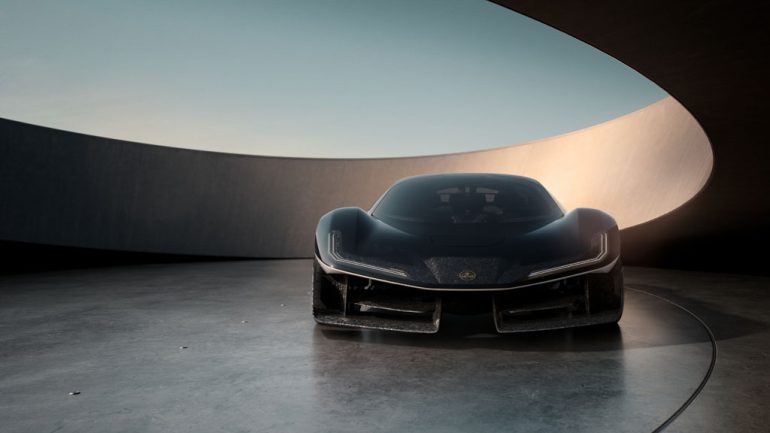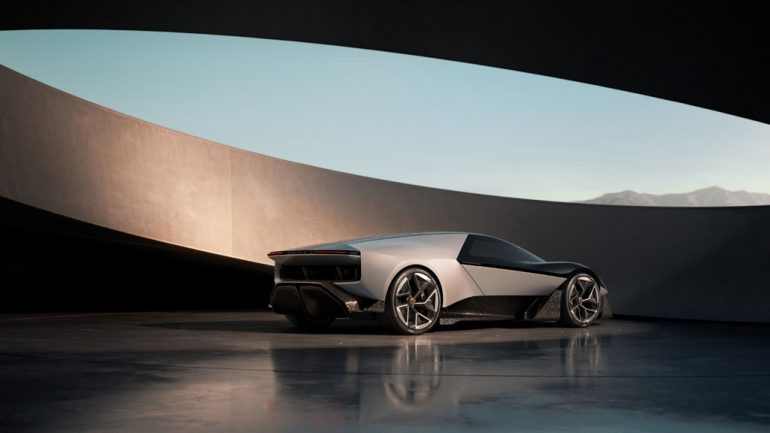
The automotive world is abuzz with the unveiling of the Lotus Theory 1, a concept car that seamlessly blends the future of electric performance with the timeless design cues of the legendary Lotus Esprit. More than just an homage, the Theory 1 is a vision of where Lotus plans to take its storied brand, fusing cutting-edge technology with the unmistakable spirit of driving purity.
At first glance, it’s easy to see how the Theory 1 draws inspiration from the iconic 1977 S1 Esprit, a car that cemented Lotus’s legacy as a builder of lightweight, agile sports cars. Yet, this is no mere throwback. The Theory 1 brings the Esprit’s legacy into the electric age, offering a futuristic take on classic design principles. The carbon-fiber body is not only light but visually striking, with bold curves and butterfly doors that make an instant impression. It’s clear that this concept is a leaner and more refined version of its predecessor, the larger Evija hypercar, while maintaining a distinctly Lotus character.
Also, don’t forget that you can get discounted new car pricing with a free quote through qualified local dealer partners.

Beneath its sleek carbon shell, the Lotus Theory 1 is powered by a dual-motor, all-wheel-drive setup that produces a staggering 986 horsepower. This immense power propels the car from 0 to 62 mph in under 2.5 seconds, with a top speed of 199 mph. But it’s not all about brute force. The 70 kWh battery ensures that the Theory 1 can deliver up to 250 miles of range, making it not just a track weapon but a viable option for more “sensible” road driving.

The focus on lightweight materials, particularly the extensive use of carbon fiber, keeps the Theory 1’s weight down to around 3,500 lbs. This dedication to keeping things light and agile is a hallmark of Lotus engineering, allowing the car to handle with the same precision and purity that fans of the brand have come to expect.
One of the standout features of the Lotus Theory 1 is its unique three-seat layout, reminiscent of the legendary McLaren F1. The driver is positioned centrally, flanked by two passenger seats. This setup not only enhances driver focus and immersion but also adds an element of exclusivity and innovation to the interior design. Paired with futuristic butterfly doors, the cabin exudes a sense of both nostalgia and forward-thinking technology.

Lotus isn’t just reimagining design with the Theory 1; it’s also pioneering new technology that could shape the future of performance driving. A key innovation is Lotuswear, an adaptive textile system integrated into the seat and steering wheel. Developed in partnership with Motorskins, this system uses haptic feedback to communicate with the driver. Tiny inflatable pods within the seat provide tactile prompts, signaling the driver when to turn or adjust, effectively making the car feel like an extension of the driver’s body.

Yet, while this cutting-edge technology excites, it also raises questions among purists. For instance, the car’s steer-by-wire system allows for adjustable steering ratios, but this comes at the expense of the direct, unfiltered steering feedback that Lotus is famous for. It’s a bold move, but one that will need to win over the loyal fans who have long appreciated the simplicity of a mechanically connected steering wheel.
Despite the shift to electric power, the Theory 1 remains grounded in Lotus’s core philosophy of lightweight, driver-focused performance. The use of the motor and battery assembly as a stressed member, a nod to the Lotus 49 F1 car’s V8 engine, highlights the brand’s commitment to keeping the car light and agile. Paired with Pirelli P Zero Elect tires, optimized to reduce rolling resistance and improve range, the Theory 1 promises to deliver a thrilling driving experience without sacrificing efficiency.

Though still a concept, the Lotus Theory 1 gives us a clear indication of where the brand is headed. It offers a tantalizing glimpse into a future where electric supercars remain true to the spirit of Lotus: light, fast, and laser-focused on the driver. While Lotus hasn’t officially labeled this car an Esprit, it’s easy to imagine a production version carrying that iconic badge in the near future.
For now, the Theory 1 stands as a beacon of what’s possible when old-school driving thrills meet modern electric innovation. Whether you’re a diehard Lotus fan or simply someone intrigued by the future of supercars, the Theory 1 demands your attention.